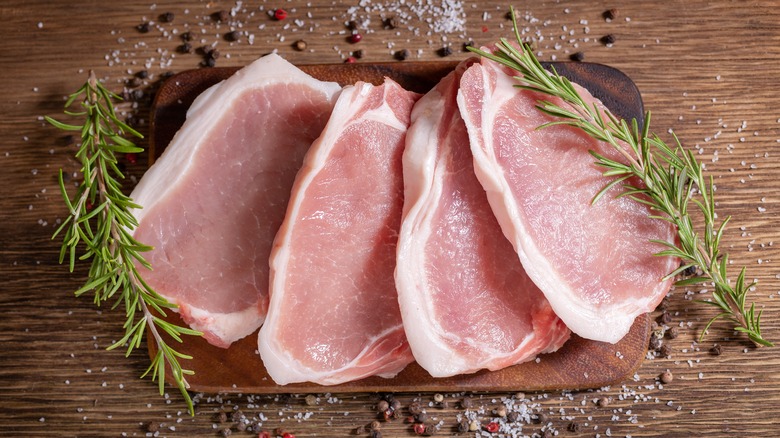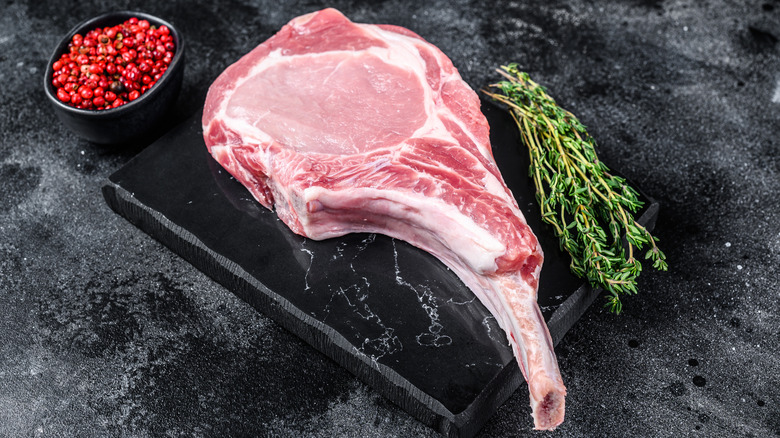Did You Know There Is More Than One Type Of Pork Chop?
In just about any butcher shop you visit, you'll see the classic butcher's diagrams: outlines of cows, pigs, and sheep with their bodies divided into sections indicating different cuts. Modern Farmer gives a great example, showing some of the most popular cuts like baby back ribs, spare ribs, and sirloin. Before you get to those cuts, however, you have to start with the primals. As butcher Bryan Mayer explained to Bon Appétit, the first step in butchering any animal is to divide it into large segments called primal cuts. A pig has four primal cuts — the shoulder (front legs), and the ham (hindquarters). The pig's midsection is divided into the loin, which covers the back and sides, and the belly.
The loin is perhaps the most versatile of the four primal cuts, being the source of varied cuts, such as the tenderloin, baby back ribs, and fatback. The loin is also where we get pork chops, which the National Pork Board states are the most popular of all pork cuts — but that "pork chop" isn't really a singular cut. There are multiple types of pork chops, and each one presents different opportunities and challenges in the kitchen.
Five kinds of pork chop
The loin is a long section of meat, covering nearly all of the pig's back. There are five types of pork chop — the rib chop, boneless chops, porterhouse chop, sirloin chops, and shoulder chops. Rib chops lie between a pig's shoulder and the middle of the loin. They feature a big piece of lean loin meat with some fat on the edges and a rib bone along one side. If you don't get a rib chop, you'll probably get a loin chop, which has a T-bone shape. One side of the bone has loin meat and the other side has tenderloin. Rib and loin chops are best for the grill, heavily seasoned to lock in the juices.
The less common pork chops are the shoulder chop — which includes a bit of the shoulder blade — and the sirloin chop, which contains some of the hip and backbone. Both of these cuts have intense flavor, but also a fair bit of muscle, making them ideal for a slow cooker. The fifth and final type of chop is the boneless pork chop, which is a deboned loin or rib chop. Real Simple warns that these are easy to overcook, meaning you should look for cuts that are at least an inch thick to ensure they don't dry out.

